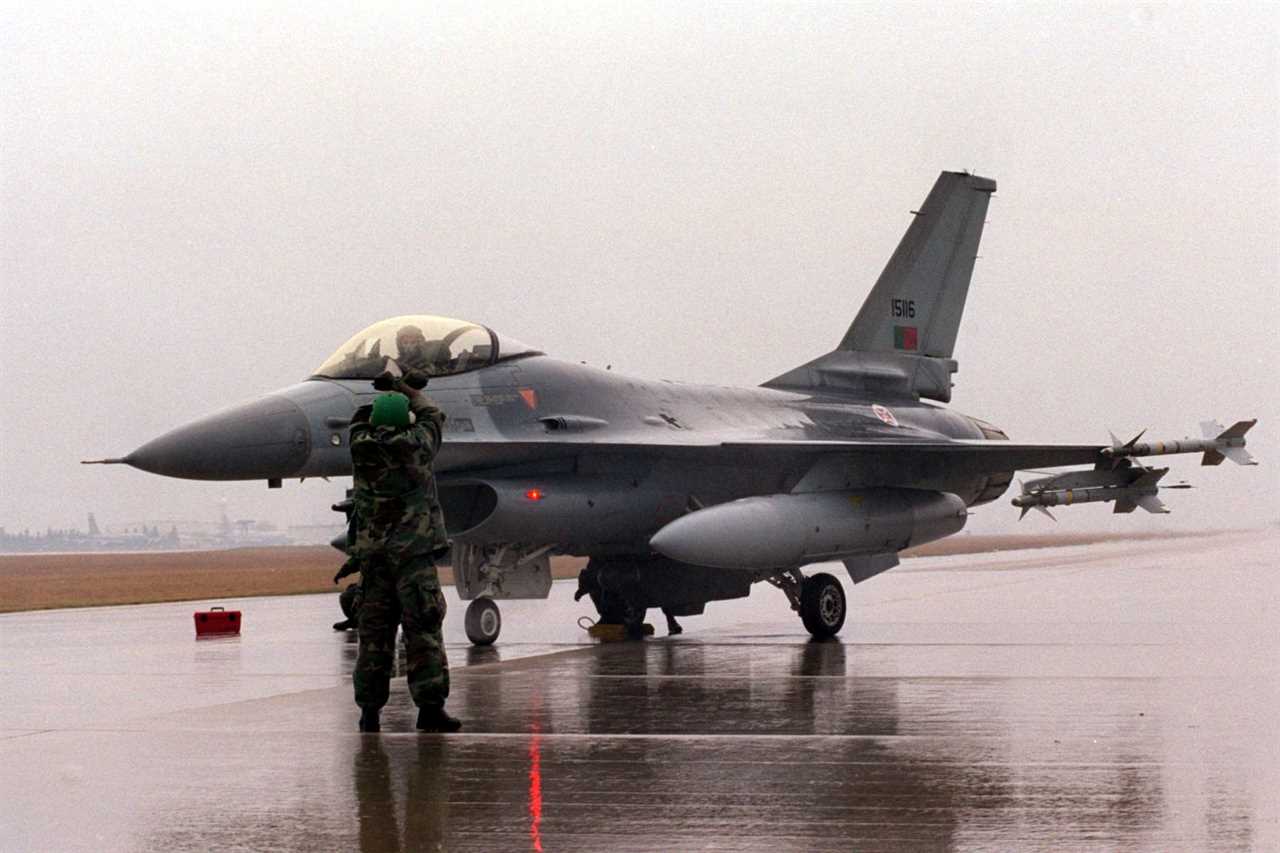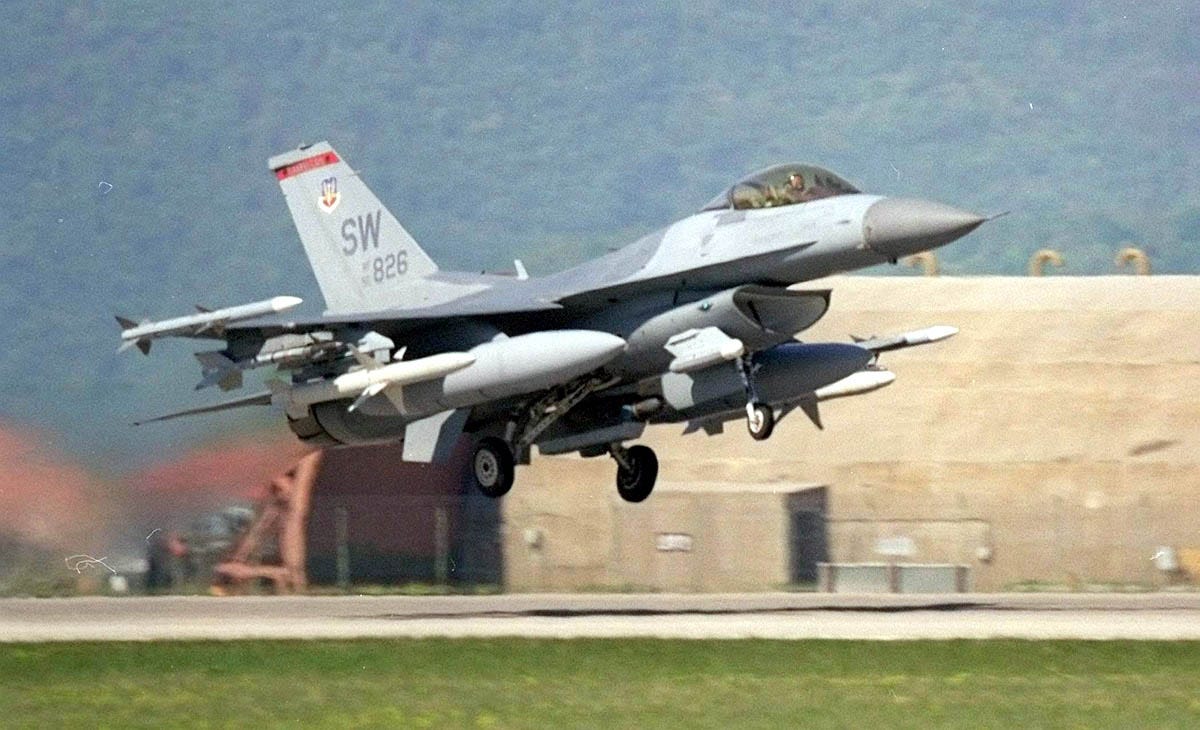ERIC FEFERBERG/AFP via Getty Images
- Both Russia and Ukraine employ decoys on the battlefield to draw enemy fire and waste ammo.
- It's tough to make decoys convincing enough to fool the other side though.
- Yugoslav forces in the Kosovo War faced similar struggles trying different tricks to fool NATO jets.
Russia is deploying fake tanks in Ukraine, echoing tactics seen a war a little over three decades ago, but it can be a struggle to make them convincing, possibly even more so than it was in the past.
Drone footage posted on Telegram last month by a group identifying as part of Ukraine's 116th Mechanized Brigade showed what appeared to be inflatable Russian T-72 tanks in a field. The drone's operator seemed to notice the tanks were not real, zooming in on the puffy tanks in the video. The group warned Ukrainian forces that they should "be careful" to "not spend the ammunition" unnecessarily firing at obvious decoys.
The apparent fakes are the latest example of the use of decoys in the war in Ukraine, in which both sides have built a number of fake weapons, some of which are better than others. They are also the latest in a long history of deploying decoys on the battlefield in an attempt to trick the enemy.

Mitch Fuqua/USAF
During the 1998-1999 Kosovo War — an armed conflict between the Federal Republic of Yugoslavia and the Kosovo Liberation Army that ended after NATO forces intervened in response to overwhelming evidence of humanitarian crimes and ethnic cleansing against the Albanian people — Serbian troops with the Yugoslav forces got creative in their attempts to craft fake tanks and weapons systems to trick NATO aircraft.
NATO air forces prioritized an aerial bombing campaign called "Operation Allied Force" against Yugoslav troops, which lasted over two months. The air strikes were devastating, ultimately prompting the withdrawl of Yugoslav armed forces.
Toward the end of the war, NATO pilots claimed successful hits on tanks and artillery almost every day, but it became clear after the war that a portion of the those targets were decoys. Tanks were made of wood and plastic sheeting and wrapped in camouflage netting, according to reporting from The New York Times at the time.
"One of the big surprises was the extent to which the Yugoslav military was able to use ground decoys to cause us to strike targets that weren't real,'' one senior Defense Department official told the Times.
Outgunned by superior NATO airpower, Yugoslav forces took extra steps to try to make their fakes convincing.
Troops put metal objects, such as tape or plates, in the sun, getting them warm enough to fake heat signatures. Even trays of water, also heated by sunlight, were placed inside the fake tanks to give the impression the tank was crewed, running, and operational.
The 2001 RAND report "NATO's Air War for Kosovo: A Strategic and Operational Assessment" noted the smart ways Yugoslav forces made decoys appear real to NATO jets, writing: "Not only did the Serbs make successful use of tank decoys made out of tetra-pak milk carton material, they also positioned wood-burning stoves with their chimneys angled to make them look like artillery pieces. In some cases, water receptacles were found in the decoys, cleverly placed there to heat up under the sun to help replicate the infrared signature of a vehicle or hot artillery tube."

Usaf/Getty Images
It's debatable how convincing these decoys were, as different sides of the conflict tell different stories. After the war ended, claims that plenty of phony targets were hit became a major thorn within NATO.
''For the most part, our pilots recognized those decoys,'' General Wesley K. Clark said at the time, the Times reported. ''There is a concerted disinformation campaign underway by the Government of Yugoslavia to protect the reputation of its armed forces and to diminish the reputation of NATO's air power campaign.''
Yugoslav commanders boasted that they'd fooled NATO pilots into striking hundreds of decoys. To their credit, one former senior NATO official told the Times in a post-war assessment that "NATO hit a lot of dummy and deception targets."
"It's an old Soviet ploy," the official continued, referencing the Russian deception tactic known as maskirovka, which involves camouflage, fakes, disinformation, and misdirection, among other things.
Countering the narrative on decoys, Clark later ordered a survey on battlefield evidence, which found that just 25 decoys were struck — an incredibly small percentage of the 974 confirmed hits. Further indicating pilots may not have been fooled by the fakes, NATO said that their pilots were operating under a procedure to engage any and all targets, regardless of whether or not they were dummies.
Making realistic decoys can be a challenge. In Ukraine, some Russian decoys have been called out by observers for being less than convincing. One expert argued the fake tanks in the recent video, some of which were just sitting in the open with no obvious signs of activity and no tracks in the dirt, were "not credible." And earlier this year, Ukraine said some of Russia's inflatable tanks in Zaporizhzhia had seemingly deflated — a dead giveaway.
The aim with the decoys, which both Ukraine and Russia continue to employ, is to trick the enemy, draw fire, waste precious ammunition, and potentially get the other side to give away their position. To do that, the fakes need to be convincing and look like the real deal, especially with countless drones swarming the battlefield.
As the war drags on, that has created something of a "decoy arms race," an expert told Insider. It's not enough just to place a fake tank on the battlefield. It's got to be treated as if it's real, covered in camouflage material, surrounded by defenses, positioned carefully near shrubbery or trenches, and potentially carrying a heat signature to fool thermal scanners.
Read More
By: [email protected] (Chris Panella)
Title: Russia's fake tanks in Ukraine aren't always convincing, a struggle another army faced trying to trick NATO jets decades ago
Sourced From: www.businessinsider.com/russia-fake-tanks-similar-to-army-trick-nato-jets-decoys-2023-10
Published Date: Tue, 03 Oct 2023 19:17:47 +0000
.png)





